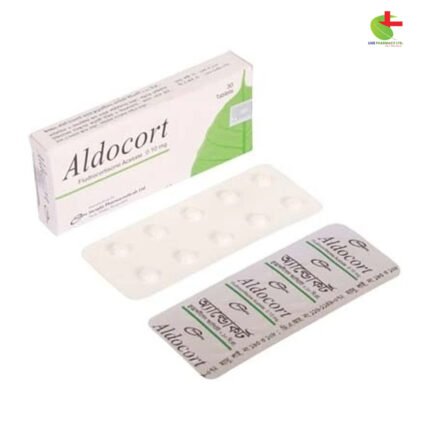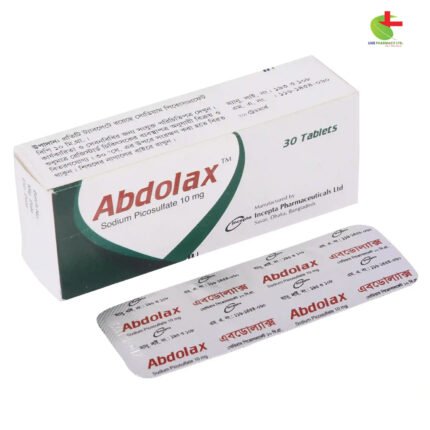Tinabil
150.00৳ Strip
- Tinabil is an effective, non-sedating antihistamine used to treat allergic rhino-conjunctivitis, urticaria, and hay fever symptoms.
- It provides relief from sneezing, itchy, runny nose, blocked nose, and watery eyes.
- Tinabil offers long-lasting, potent action without causing drowsiness, making it suitable for daily use.
- Available for both adults and children, with specific dosage recommendations based on age.
 Brand
Brand
|
Incepta Pharmaceuticals Ltd |
|---|---|
 Generics
Generics
|
Bilastine |
 Type
Type
|
Tablet |
Indications
Tinabil is designed to provide effective symptomatic relief for:
- Allergic rhino-conjunctivitis (both seasonal and perennial)
- Urticaria (hives)
Additionally, Tinabil alleviates symptoms of hay fever, such as sneezing, itchy, runny, or blocked nose, and red, watery eyes.
Use only as directed by a registered healthcare provider.
Pharmacology
Bilastine is a highly potent, non-sedating, long-acting histamine antagonist. It demonstrates a strong affinity for the H1 receptor (3 times higher than Cetirizine and 5 times higher than Fexofenadine). At high concentrations, Bilastine does not interact with other receptors, such as muscarinic, serotonergic, dopaminergic, or noradrenergic receptors, nor with histamine receptor subtypes H2, H3, or H4. Bilastine is well-known for its excellent safety profile and favorable pharmacokinetics. It remains unchanged in its active form without undergoing metabolism and is primarily excreted through the feces (66.35%) and urine (28.31%).
Dosage & Administration
- Adults & Adolescents (12 years and older): Take 20 mg once daily for the relief of allergic rhinitis, urticaria, and allergic rhinoconjunctivitis. The maximum recommended dose is 20 mg (1 tablet) per day. If a dose is missed, continue with the next scheduled dose. Do not double the dose. Swallow the tablet with water on an empty stomach for optimal absorption.
- Children (6 to 11 years): Take 10 mg as a mouth-dissolving tablet once daily. This tablet dissolves rapidly in saliva and can be swallowed easily or mixed with a teaspoon of water. The maximum recommended dose is 10 mg (1 tablet) daily. If a dose is missed, proceed with the next scheduled dose. Do not take extra doses.
- Children (2 to 11 years): 4 ml once daily.
Use only as directed by a registered healthcare provider.
Interaction
When taken with ketoconazole, erythromycin, cyclosporine, or diltiazem, Tinabil’s concentration may increase. However, these interactions do not impact the safety profile of any of the medications. The combination of alcohol with Tinabil (20 mg) does not alter psychomotor performance compared to alcohol or placebo. Taking Tinabil (20 mg) alongside lorazepam (3 mg) for eight days did not intensify lorazepam’s CNS depressant effects.
Contraindications
Tinabil should not be used by individuals with known hypersensitivity to bilastine or any components of the tablet.
Side Effects
Common side effects reported in clinical trials include headache, dizziness, drowsiness, and fatigue. These side effects occurred with a frequency similar to that of a placebo.
Pregnancy & Lactation
Limited data is available on Bilastine’s use during pregnancy. Animal studies show no significant reproductive toxicity or harm to fetal development. As a precaution, Bilastine should be avoided during pregnancy unless the benefits outweigh the risks. The excretion of Bilastine in breast milk has not been studied in humans. The decision to use Bilastine while breastfeeding should consider both the benefit to the mother and the potential risks to the infant.
Precautions & Warnings
Tinabil does not typically affect driving ability. However, some individuals may experience drowsiness, which could impair their ability to operate vehicles or machinery. No differences in efficacy or safety were observed in clinical trials between elderly patients (≥65 years) and younger individuals. In patients with severe renal impairment, Tinabil’s plasma concentration remains below safety thresholds, and no dosage adjustment is necessary. Since Tinabil is primarily excreted via the kidneys, liver function changes are unlikely to affect its elimination.
Use in Special Populations
The safety and efficacy of Tinabil have not been established in children under 2 years, and there is limited clinical experience in children aged 2 to 5 years. Therefore, it is not recommended for use in these age groups.
Overdose Effects
In clinical studies, doses of Tinabil up to 10-11 times the therapeutic dose (220 mg single dose or 200 mg/day for 7 days) resulted in a higher frequency of adverse events compared to placebo. The most commonly reported effects were dizziness, headache, and nausea. No serious adverse effects or significant QTc interval prolongation were observed.
Therapeutic Class
Non-sedating antihistamine
Storage Conditions
Store below 30°C, protected from light and moisture. Keep out of reach of children.













Reviews
There are no reviews yet.